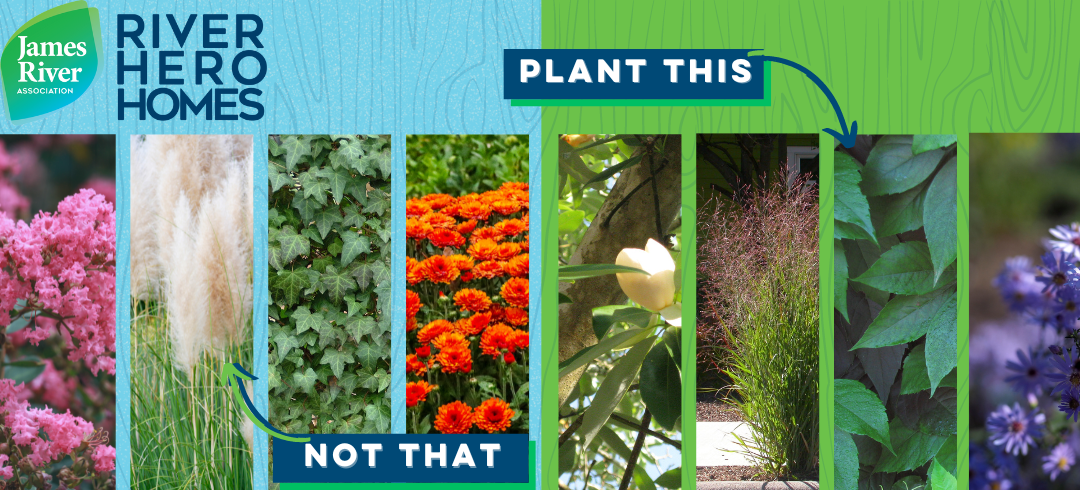Many plant species prevalent in landscapes are not native and even invasive to our part of the world. Non-native and invasive plant species generally offer little ecological value and can outcompete native plant species. Species including Crape myrtle, Nandina, and English ivy should never be planted in our region. Remove them from your landscape and consider replacing them with native species. Native species are adapted to our local climate and provide habitat for wildlife that make gardening such a joy. As you make plans to enhance your landscape this spring, be sure to include regionally native plants in your plant palette by referencing the Digital Atlas of the Virginia Flora.
Trees
Crape myrtles, known for their colorful summertime flowers, are prevalent in landscapes across Virginia but did you know they are not native to North America? Not only are Crape myrtles not native and provide little ecological value, but they are also susceptible to Crape myrtle bark scale. Crape myrtle bark scale emerged in Chesapeake, Virginia a few years ago and is infecting Crape myrtles as it spreads across Virginia. Bark scale is a pinkish scale insect that produces a layer of whitish-gray waxy material that thickens as the scale matures. It also produces honeydew, which supports the growth of sooty mold on trunks and branches.
Plant This! Native Eastern redbuds (Cercis canadensis), Flowering dogwoods (Cornus florida), Sweetbay magnolias (Magnolia virginiana), and White fringetrees (Chioanthus virginicus) are alternatives to non-native Crape myrtles. These flowering tree species are similar in form to Crape myrtles and typically don’t exceed 30’ in height.
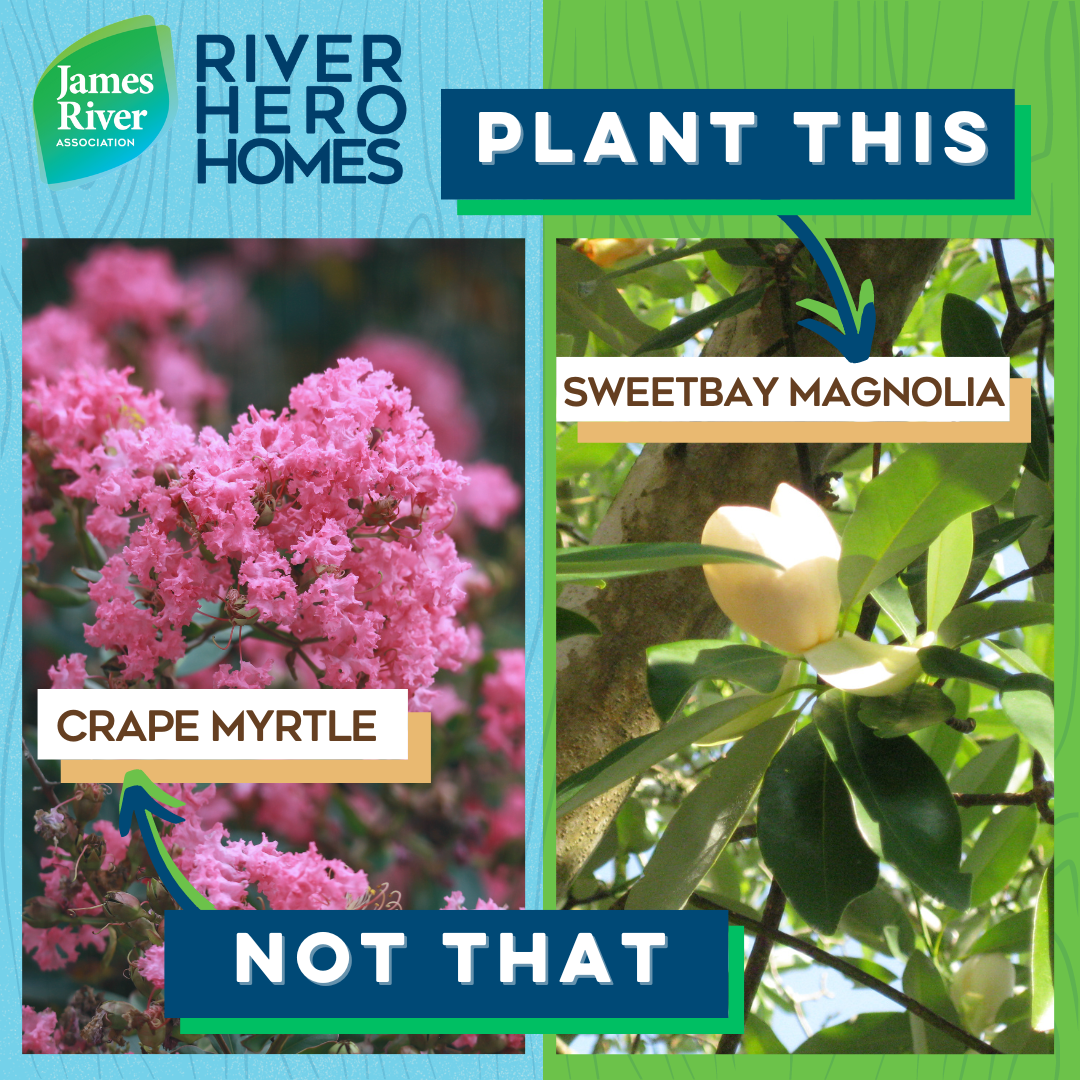
Shrub
Nandina (Nandina domestica) is a non-native leafy shrub that grows to be 4’ to 8’ tall and 2’ to 4’ wide. Nandina is widely available and prevalent in landscapes across Virginia. It is invasive in some areas and provides little ecological value. In fact, Nandina berries can kill birds that consume them including Cedar waxwings.
Plant This! Consider planting native Virginia sweetspire (Itea virginica) instead of non-native Nandina. Sweetpsire is a shrub that is similar in size to Nandina, blooms in early summer, and has colorful fall foliage.
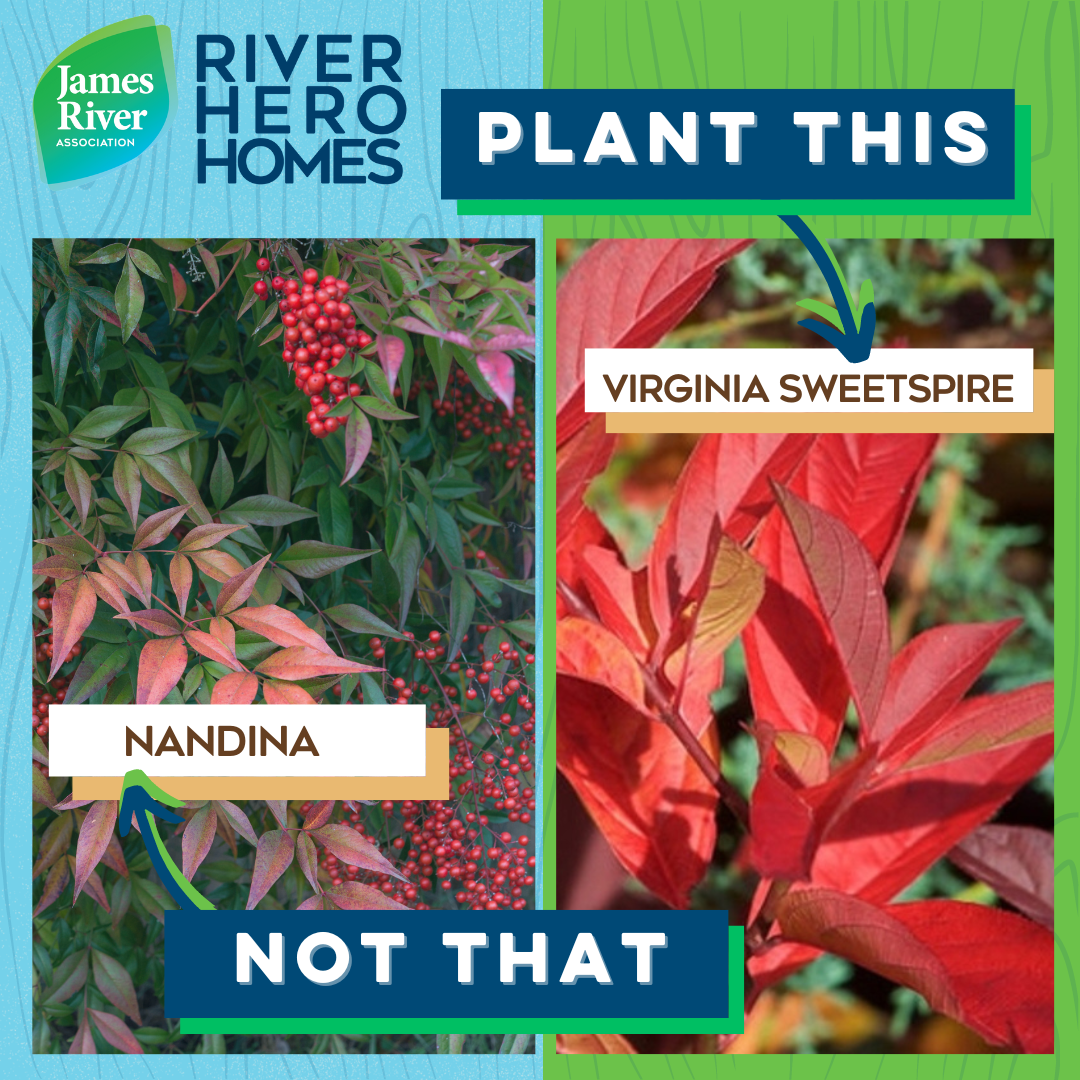
Herbaceous Plant
Mums are flowering plants in the genus Chrysanthemum and are very popular during the fall months. While mums add color to our yards and porches in October and November, they are not native and don’t do much for pollinators.
Plant This! Asters are a native alternative that add color to gardens and landscapes when they bloom at the end of summer and into fall. Pollinators love asters and depend on them as a source of late season nectar. They attract bees, bumblebees, and butterflies. Consider planting Blue wood aster (Symphyotrichum cordifolium), New England aster (Symphyotrichum novae-angliae), New York aster (Symphyotrichum novi-belgii), and Wavy leaf aster (Symphyotrichum undulatum) this spring.
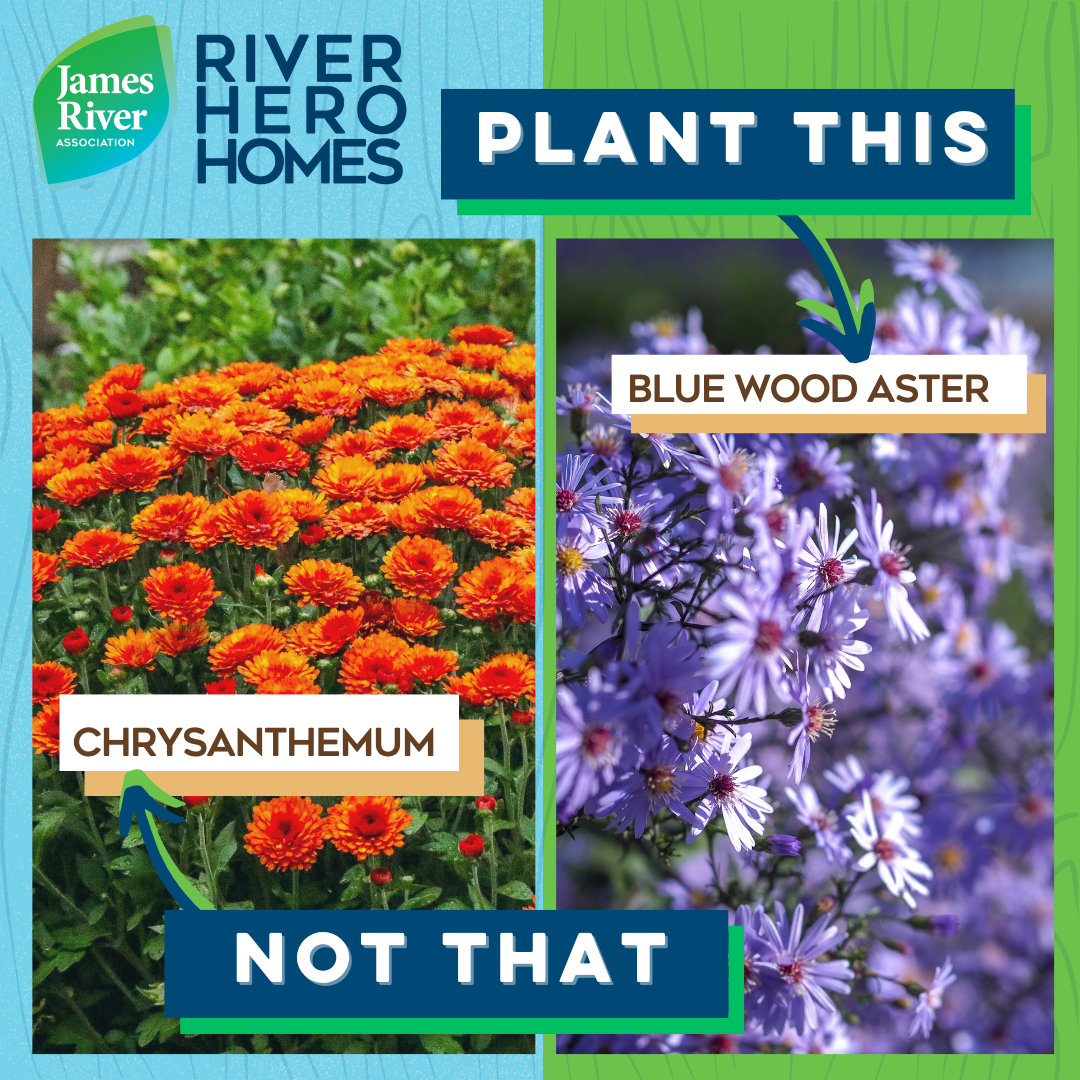
Grass
Chinese silvergrass (Miscanthus sinensis), Fountain grass (Pennisetum), and Pampas grass (Cortaderia selloana) are non-native grasses too frequently seen in landscapes across Virginia. These grasses can grow aggressively in landscapes and provide little ecological value.
Plant This! Virginia is home to numerous native grasses. A widely available alternative is Switchgrass (Panicum virgatum), a native perennial warm-season bunchgrass that supports native wildlife. Another alternative is sedge-like Muhly grass (Muhlenbergia capillaris), a perennial grass that is pinkish in color.
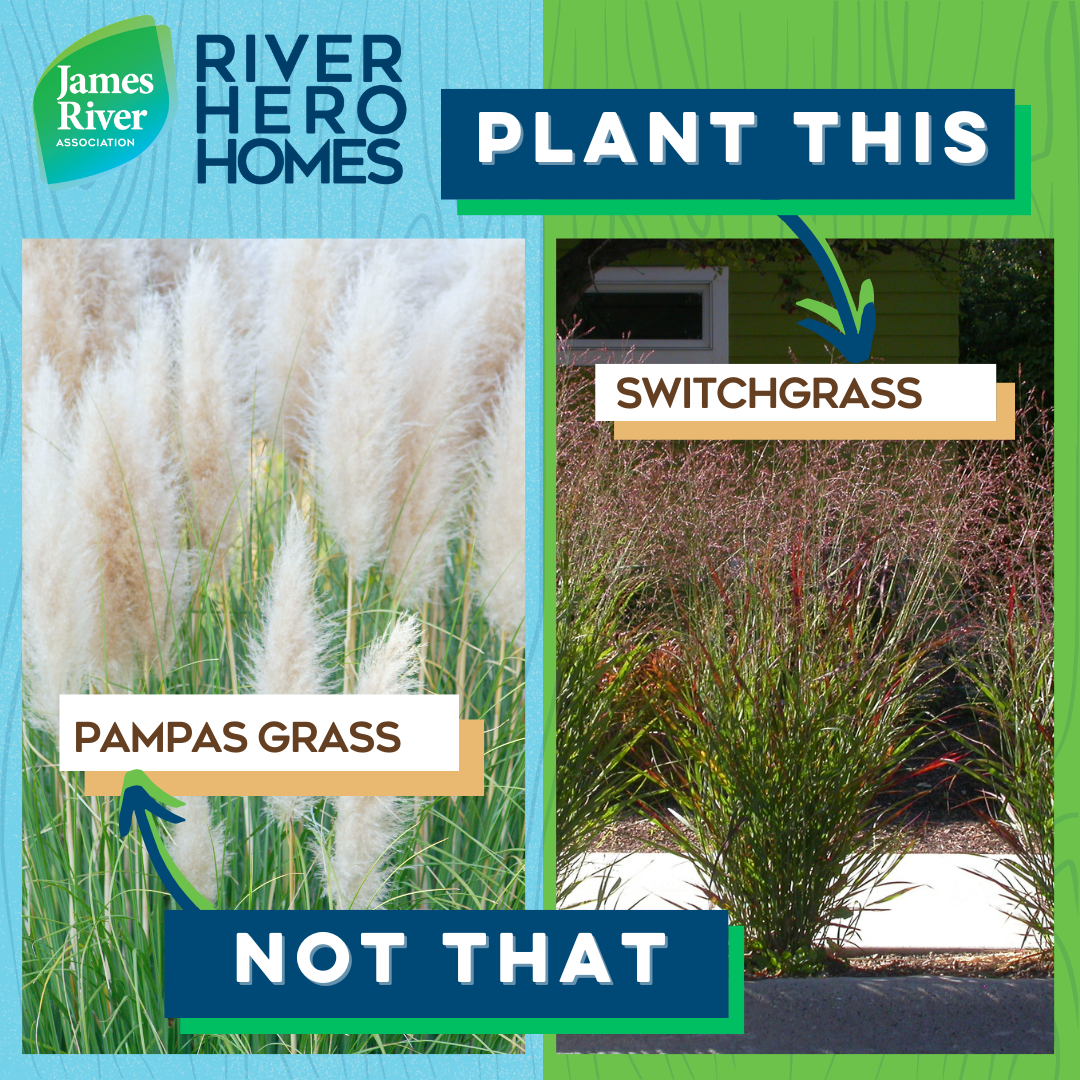
Vine
English ivy (Hedera helix) is a non-native woody vine found in landscapes and natural areas across Virginia. If not properly maintained in landscapes, it becomes invasive and spreads. It outcompetes native herbaceous plants and threatens the health of trees it grows up. It should be removed from gardens and landscapes immediately.
Plant This! Virginia creeper (Parthenocissus quinquefolia) is a native alternative to non-native English ivy. Birds love Virginia creeper berries but beware, it grows aggressively.
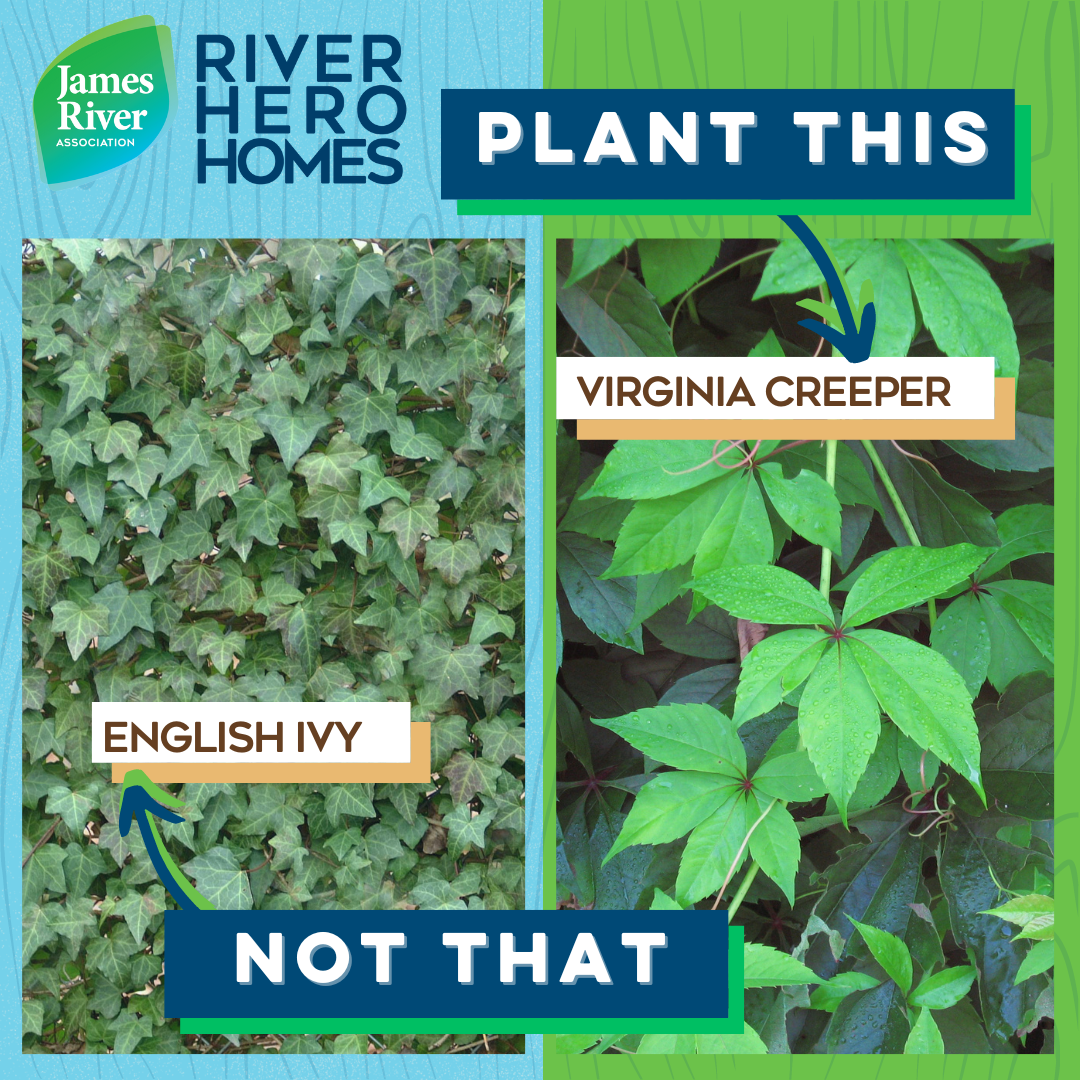
You can incorporate native plantings into a bayscape, rain garden, or vegetated filter strip, use them as your foundation planting, plant a windbreak with evergreens, or plant a buffer along the stream that runs through your property. Planting natives and avoiding invasive plants could qualify you to become a River Hero Home member! Learn more about the program, and how you can be a hero, at the link below!

